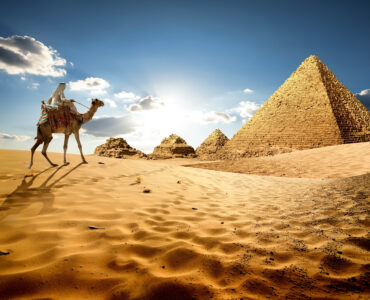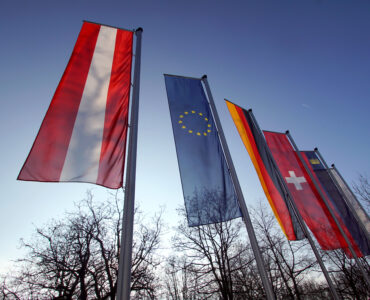Punjabi, with over 100 million speakers, is not just one of the top 10 spoken languages in the world; it’s a living tapestry of culture and history. Predominantly spoken in the Punjab region, which straddles India and Pakistan, Punjabi showcases a fascinating blend of linguistic unity and scriptural diversity.
Indian Punjabi (Gurmukhi Script)
In India, Punjabi is written using the Gurmukhi script, a legacy of the Sikh Gurus, particularly Guru Angad Dev Ji. This script is more than a mere tool for writing; it’s a symbol of the Sikh faith, as evidenced by its use in the holy Sri Guru Granth Sahib. Gurmukhi, meaning “from the Guru’s mouth,” is a modified version of the older Landa script. It comprises 35 original letters, 9 vowel diacritics, 6 consonants, three subscript characters, and 2 diacritics for nasal sounds.
Gurmukhi’s structure and vocabulary are deeply influenced by other Indo-European languages like Sanskrit and Hindi. This interconnection allows for a smoother understanding and transition for speakers of other North Indian languages when they encounter Punjabi.
Pakistani Punjabi (Shahmukhi Script)
In Pakistan, Punjabi adopts a different avatar, written in the Shahmukhi script. This script is closely related to Urdu and borrows its structure from the Arabic script, reflecting the Islamic influence in the region. Shahmukhi, meaning “from the King’s mouth,” is written from right to left, unlike Gurmukhi’s left-to-right orientation. It includes additional letters to accommodate Punjabi phonetics not present in Urdu, making it distinct yet connected to the wider linguistic practices of the Islamic world.
The use of Shahmukhi in Pakistani Punjab is not just a linguistic choice but also a cultural and religious statement. It underscores the deep connection between language and identity, showing how Punjabi adapts to the contours of its speakers’ beliefs and practices.
Cultural and Linguistic Unity
Despite these differences in scripts, the essence of Punjabi as a language of emotion, expressiveness, and cultural richness remains constant across borders. Punjabi speakers, whether in India or Pakistan, share a common thread of humor, passion, and a profound respect for their traditions and beliefs. This shared cultural and linguistic identity is a testament to the unifying power of language, transcending political and geographical divides.
Punjabi Literature and Arts
Punjabi literature and arts are rich and diverse, with contributions from both sides of the border. In Indian Punjab, the Gurmukhi script has been used to pen down a wealth of Sikh religious texts, poetry, and folklore. Pakistani Punjab, with its Shahmukhi script, has a strong tradition of Sufi poetry and storytelling. This literary richness adds layers of depth and meaning to the Punjabi language, making it not just a means of communication but a carrier of cultural heritage.
The Influence of Religion
Religion plays a significant role in the differentiation of Punjabi scripts. In India, Sikhism’s influence on Punjabi is undeniable, as seen in the use of Gurmukhi in religious texts and practices. In Pakistan, Islam’s impact is evident in the adoption of the Shahmukhi script, aligning Punjabi with the wider Islamic literary tradition. This religious influence goes beyond script, permeating the cultural expressions and idiomatic nuances of the language.
The Role of Punjabi in the Global Context
The global Punjabi diaspora has played a significant role in spreading both forms of Punjabi worldwide. Countries like the UK, Canada, the USA, and Australia have vibrant Punjabi-speaking communities, adding to the language’s global presence. This international reach has made Punjabi a global language, transcending its regional origins and becoming a part of the world’s linguistic mosaic.
The Future of Punjabi
As Punjabi continues to evolve and adapt, it faces new challenges and opportunities. The digital age has brought both forms of Punjabi into the global conversation, with online platforms becoming spaces for linguistic and cultural exchange. Young Punjabi speakers, influenced by global trends, are finding new ways to express their identity and heritage through this ancient language.
Conclusion
Punjabi, in its Indian and Pakistani forms, is a fascinating study in linguistic diversity and cultural unity. The different scripts – Gurmukhi and Shahmukhi – not only represent the linguistic variations but also the rich, varied cultural, religious, and historical contexts of its speakers. As Punjabi continues to be spoken and cherished by millions around the world, it carries with it the stories, traditions, and identities of a vibrant and diverse community, making it a language that’s not just spoken but lived.






Fascinating exploration of Punjabi’s diversity! 🌍 Despite different scripts, it’s heartening to see the cultural and linguistic unity across borders. 🤝📜 Punjabi literature and arts enrich the language, while religion adds depth to its expression. 🕌💬 Exciting to see Punjabi thriving globally in the digital age! 💻🌐 #PunjabiUnity #CulturalHeritage 🇮🇳🇵🇰
Prashas research consulting is one of the best and trusted education consultants located in Hyderabad, Telangana. We provide admission guidance for PhD aspirants.
We at Prashas have occupied a Niche Market in the field of Education and we are specialized in Doctorial, Post Doctorial and its Aligned Services
PhD Admissions,PhD Mentoring, Honorary Doctorates, Post PhD Admissions, Awards, Distance Education, Phd In India.
Visit us : https://prashas.com
This article beautifully captures the rich linguistic and cultural diversity of Punjabi, highlighting the unique scripts and historical significance in both India and Pakistan. It underscores the unifying power of the language, transcending political and geographical boundaries, and celebrates the global presence of Punjabi through its vibrant diaspora. The detailed exploration of Gurmukhi and Shahmukhi scripts, alongside the influence of religion and literature, provides a comprehensive understanding of Punjabi’s profound heritage and evolving future.
Interesting investigation of Punjabi’s variety! 🌍 It is encouraging to see the linguistic and cultural cohesion across boundaries, even in spite of disparate scripts. 🤝📜 Punjabi arts and literature enhance the language, while religion gives it depth. 🕌💬 Great to see Punjabi people thriving in the digital era all around the world!